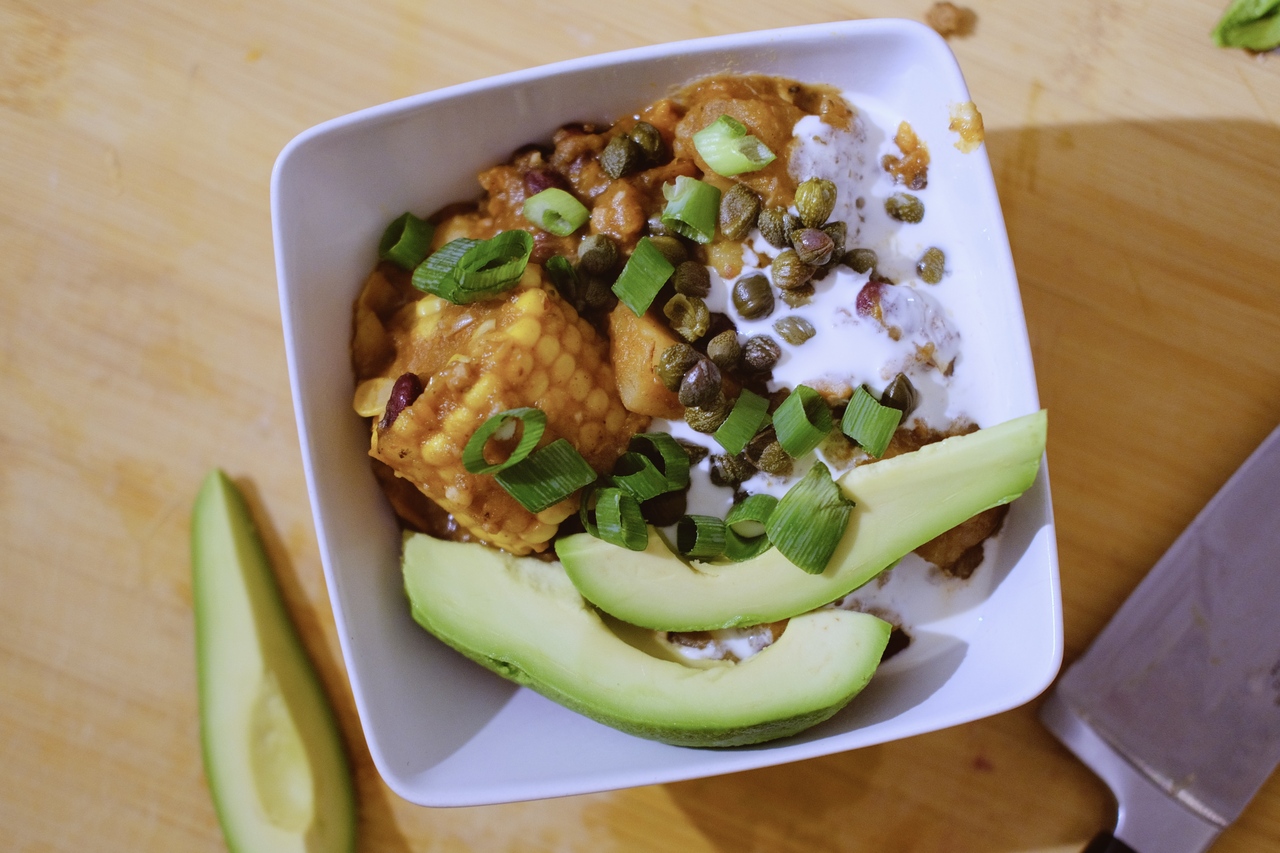Ajiaco

Columbian meats and tubers soup, but vegan, in my Amsterdam kitchen, 2021.
A traditional potato and meats soup that is really popular in Bogotá, Columbia's capital city.
This is a case of "do as these other recipes tell you, not as a say" if you desire a truly traditional dish. Here are all the sources I used for research.
I deviated from these people because I wanted to make a vegan dinner. Admittedly, many South-American cuisines are not the first place to look at when searching for planet-friendly foods. And sometimes I do actually prepare their dishes in a more traditional sense (i.e., including meats), as I did with Brazilian feijoada, for example. This time around, I figured I could make some nice vegetable substitutions.
In principle, there are three steps to ajiaco.
- A base of oil, onion, tomatoes, peppers, garlic, and cumin.
- Meats (beef is the most common in the Spanish sources I found, but all the English sources tend to say that chicken is traditional; in reality, I think Colombians tend to use multiple meats).
- Tubers (Wikipedia: enlarged structures used as storage organs for nutrients in some plants; sounds cool) and vegetables
My meat substitutes consisted of plant-based minced meat (125 grams left over after I made a vegan mapo tofu with my friend Mark) and red kidney beans. They work pleasingly well, though it's best to include your kidneybeans only near the end if you have tin. I also bought some dried beans, but too late to get them soaking in time. In case you do happen to have some soaked beans conveniently within reach, just include them in the beginning and they will cook along nicely.
The herb guasca is very important to the unique tast of ajiaco. Dutch supermarkets do not stock it though. I went with dried oregano instead, but I keep telling myself that it isn't the real deal. This can become a future adventure.
Now as for the third step, I had a little fun and used potatoes (Danique, milva), orange sweet potatoes, and green plantains as my tubers. Then for some autumny vibes, I threw in half a butternut squash. I was planning to include cassave as well, but my local supermarket didn't have it stocked. Cut all of these up in cubes with dimensions of two centimeter. Add them into the pot, along with some vegetable stock and bay leaves (personal addition from Kenji). Bring to a boil and let it simmer softly for an hour or two. We are looking to soften up some of the tubers until they fall apart, while others remain with a bit more of a bite. This way we get a thicker soup but with good chunks to bite into as well. I noticed that my plantains took the longest to soften up.
Near the end, we can include some extra vegetables. I had a cob of sweet corn that I cut up into four pieces before adding it to the pot. In Colombia they would use a different species of corn that is much less sweet and more starchy. This variety would take longer to cook, so you would add it in together with your potatoes. We had plenty of starchy vegetables already though (not that I can find this corn variety in The Netherlands though).
Ladle into bowls and serve with capers, (soy) cream, avocado, and spring onion.